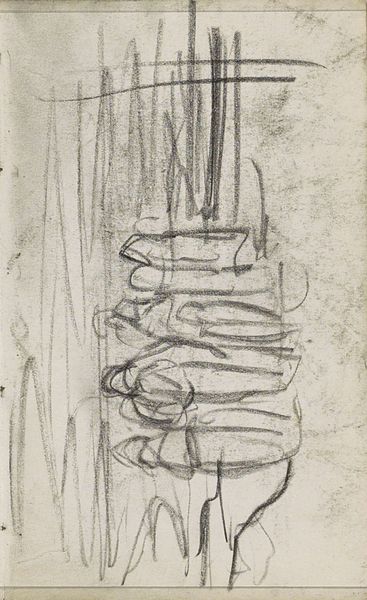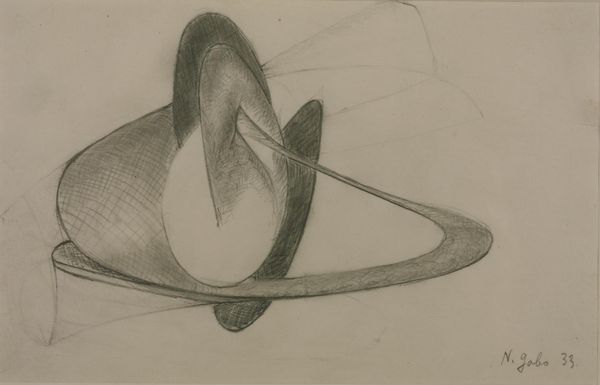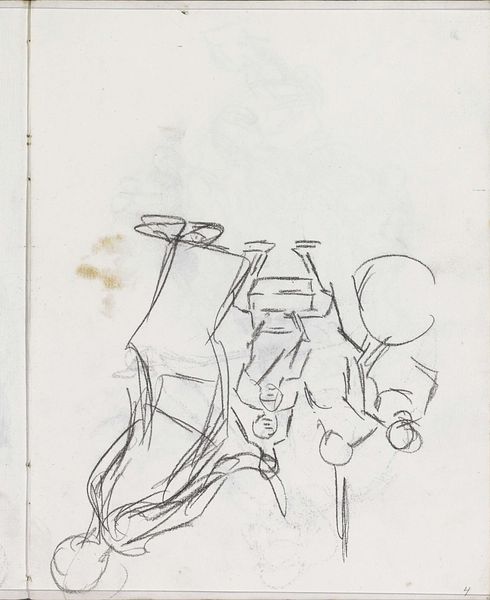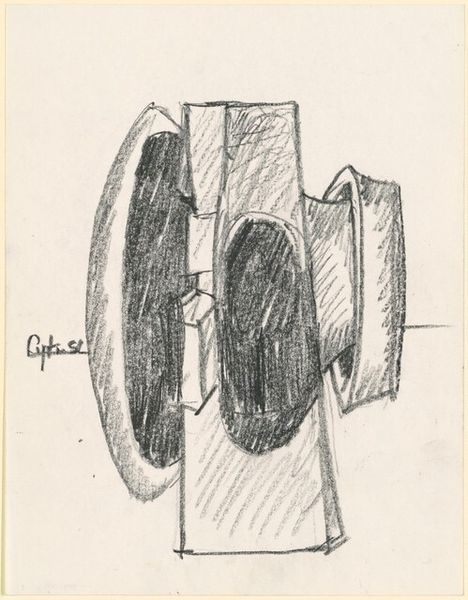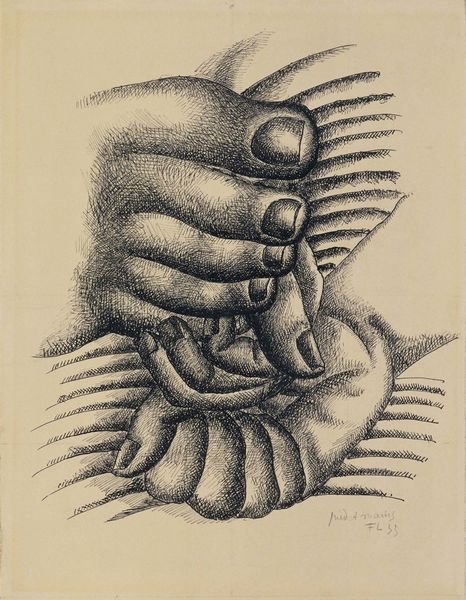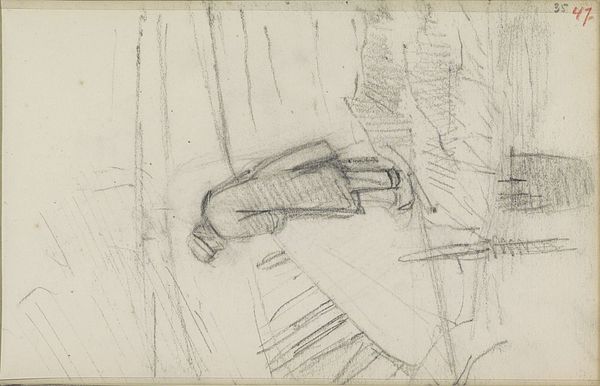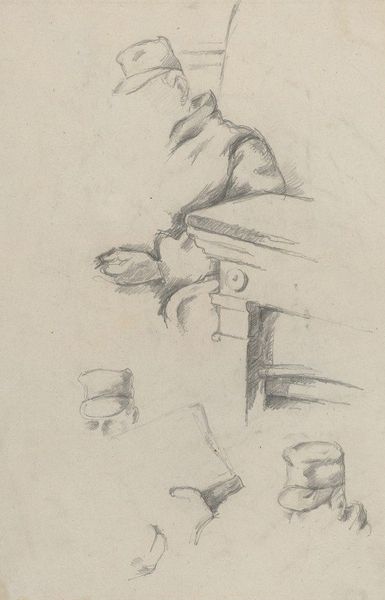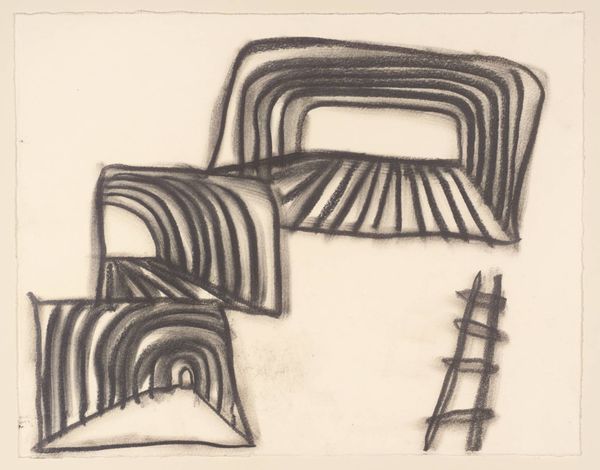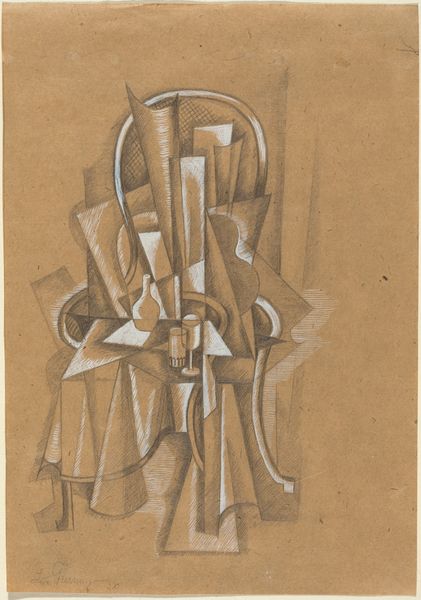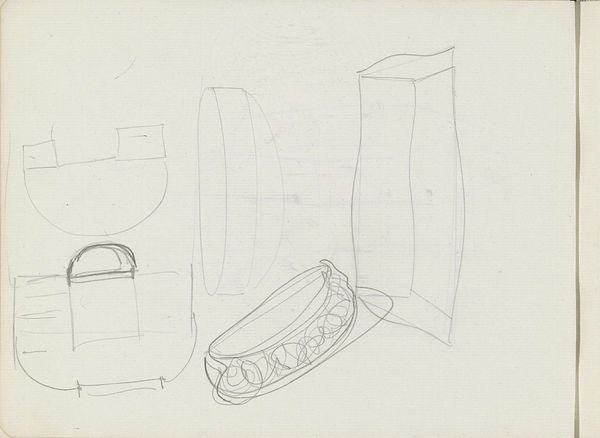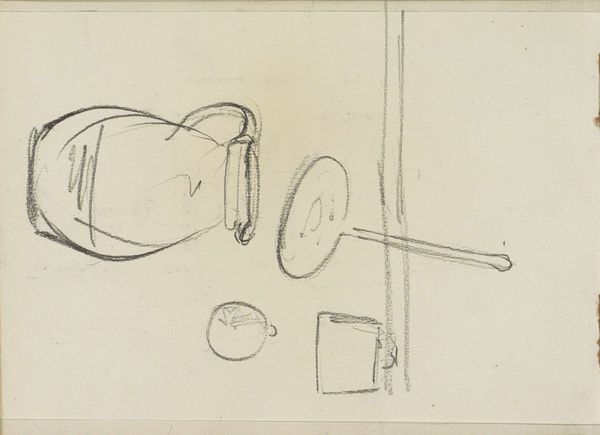
drawing, pencil
#
pencil drawn
#
drawing
#
cubism
#
pencil sketch
#
abstract
#
geometric
#
pencil
#
abstraction
Copyright: Public Domain: Artvee
Curator: The somber quality of this drawing pulls me in right away. The shades of gray suggest so many layers and meanings. Editor: Indeed. We are looking at Juan Gris's "Bock de Bière," a pencil drawing created in 1911. Its historical moment places it squarely within the development of Cubism. Do you see how Gris analyzes form and space? Curator: Absolutely, but I find it more than just formal analysis. There's a subtle emotional language. The beer stein is such a humble, everyday object but drawn here, it takes on a monumental presence, an icon almost. Beer itself can symbolize fellowship, conviviality... all fragmented now. Editor: Good point. Consider also that this period witnessed rising social tensions across Europe, on the brink of the Great War. The fracturing we see in Cubism could be read as reflecting societal anxieties and the destabilization of traditional values. A beer, or its artistic rendering, might be a subversive act in certain settings. Curator: I like that perspective! The geometrical style adds a symbolic element. Notice how the handle, the body, even the foam, all dissolve into these faceted planes? It’s like breaking down the world into its basic elements. But then, don't these deconstructed facets reflect a search for new foundations, the start of a different way of interpreting existence, in a way that felt urgent for many at the time? Editor: And a way to visualize something as common as a drink became an act of questioning bourgeois visual culture and representational systems of its era. Gris here suggests a new social vocabulary. The drawing might seem simple in its form, but I'd argue it contains very revolutionary cultural values. Curator: Agreed. Looking again, it really strikes me how an image this understated could still contain such tension and offer so many levels for introspection. Editor: Precisely. The quiet radicalism of Cubism.
Comments
No comments
Be the first to comment and join the conversation on the ultimate creative platform.

